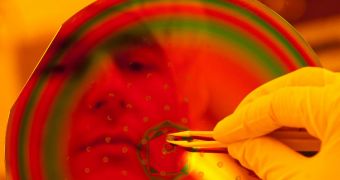Investigators at the Rice University announce the development of a new method for producing a quantum pin Hall topological insulator, a tiny device that acts as a superhighway for electrons inside electronics. The achievement could lead to the creation of hard-to-obtain quantum-particle pairs.
In turn, these constructs could be used to pave the way for the development of advanced quantum computers, machines that would exceed the performances of the most modern supercomputers several times over. Building these computers has been a goal for physicists for many years.
However, there are numerous technical hurdles associated with building such a machine, and experts around the world are currently tackling each of them in order. One of the most complex challenge is learning how to use quantum particles to replace digital transistors in conventional microchips.
Rice physicists Rui-Rui Du and Ivan Knez describe their latest device in a paper published in a recent issue of the esteemed scientific journal Physical Review Letters. They say that their quantum spin Hall topological insulator can be used to create quantum particles for data storage and manipulation.
“In principle, we don't need many qubits [quantum bits] to create a powerful computer. In terms of information density, a silicon microprocessor with 1 billion transistors would be roughly equal to a quantum processor with 30 qubits,” explains Du, a Rice professor of physics and astronomy.
He explains that future quantum computers will have to be capable of displaying a feature called fault tolerance. As the name implies, this trait will enable computers to preserve information stored on qubits against unstable quantum fluctuations that seek to destroy the sensitive data.
Topological quantum computing is one of the main directions of research in achieving this important characteristic. In a computer constructed with this principle in mind, each qubit is made up of a pair of quantum particles sharing the same, immutable identity.
This allows this particular type of qubit to remain more fault-tolerant than its competitors. Obtaining such a pair of particles has however proven to be extremely challenging. Experts refer to such a grouping as Majorana fermions.
According to theory, the best way to go about obtaining these fermions is to combine a superconductor with a two-dimensional topological insulator, which is precisely what the Rice team did. They created an insulator that they say could finally lead to obtaining Majorana fermions.
“We are well-positioned for the next step. Meanwhile, only experiments can tell whether we can find Majorana fermions and whether they are good candidates for creating stable qubits,” Du says. He adds that the study was primarily sponsored by the US National Science Foundation (NSF).

 14 DAY TRIAL //
14 DAY TRIAL //